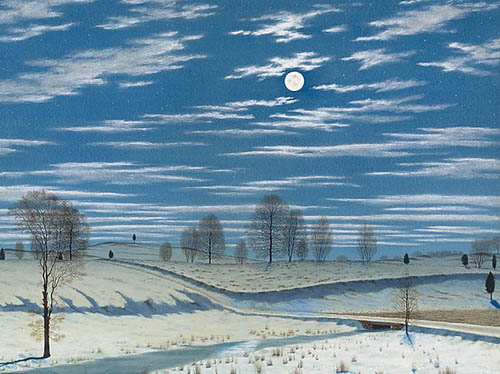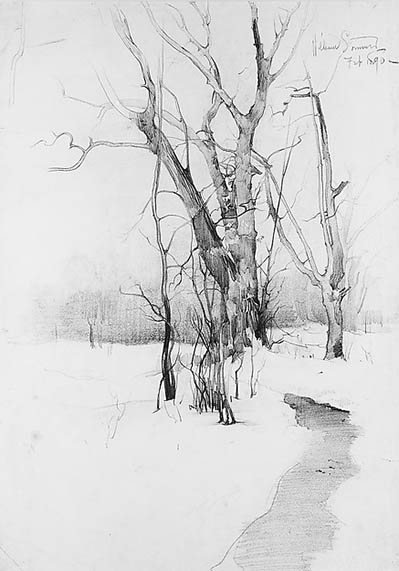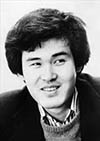기형도, 겨울·눈(雪)·나무·숲/ Ki Hyung-do, Winter. Snow. Tree. Forest

Winter Scene in Moonlight, Henry Farrer (1844–1903), 1869, Watercolor and gouache on white wove paper. Metropolitan Museum of Art Collection
Winter. Snow. Tree. Forest
Ki Hyung-do
The snow
piles up here and there,
without being able to get all the way out of the forest.
“Is it you?
Don’t hurry.”
Thump. He falls down,
hit by a sharp blade.
I return home,
dragging the tree.
As I trim off the twigs,
I listen to the silence of the tree:
“I am here.
Death is unmasked life.
Our lives, our winters are like that, too.”
We kindle fire
toward the pain
that resembles ourselves.
The night in the forest beyond the window
tosses its body for a deeper quiet.
Till I confirm my clean death
I will be absent,
keeping a beautiful distance from whoever sparks a flame,
and warming my heart little by little.
The morning rising in the late winter
is what comes to make the most perfect nature.
Afterward,
against the direction the snow melts and flows
our spring will come.
*Translated by Dr. Chae-Pyong (“J.P.”) Song 송재평 교수 & Annie Rashid
Korean Poetry in Translation https://jaypsong.wordpress.com

Winter Trees, William Sommer (1867–1949), 1890, Graphite on paper. Metropolitan Museum of Art Collection
겨울·눈(雪)·나무·숲
기형도
눈(雪)은
숲을 다 빠져나가지 못하고
여기 저기 쌓여 있다.
“자네인가,
서둘지 말아.”
쿵, 그가 쓰러진다.
날카로운 날(刀)을 받으며.
나는 나무를 끌고
집으로 돌아온다.
홀로 잔가지를 치며
나무의 침묵을 듣는다.
“나는 여기 있다.
죽음이란
가면을 벗은 삶인 것.
우리도, 우리의 겨울도 그와 같은 것.”
우리는
서로 닮은 아픔을 향하여
불을 지피었다.
창 너머 숲 속의 밤은
더욱 깊은 고요를 위하여 몸을 뒤채인다.
내 청결한 죽음을 확인할 때까지
나는 부재(不在)할 것이다
타오르는 그와 아름다운 거리를 두고
그래, 심장을 조금씩 덥혀가면서.
늦겨울 태어나는 아침은
가장 완벽한 자연을 만들기 위하여 오는 것.
그 후에
눈 녹아 흐르는 방향을 거슬러
우리의 봄은 다가오고 있는 것이다.
 기형도(奇亨度, 1960-1989)
기형도(奇亨度, 1960-1989)
경기도 연평도에서 태어나 연세대 정치외교학과를 졸업했다. 대학시절 연세문학회에서 활동했으며, 1985년 동아일보 신춘문예 시 부문에 '안개'로 당선됐다. 대학 졸업 전인 1984년 중앙일보에 기자로 입사해 일하며 시를 발표했다. 1989년 종로 파고다극장에서 심야영화를 관람하다 뇌졸중으로 사망했다. 유고시접 '잎 속의 검은 잎'을 비롯, '사랑을 잃고 나는 쓰네' 산문집 '짧은 여행의 기록', 전집 '기형도 전집' 등이 출간됐다.






